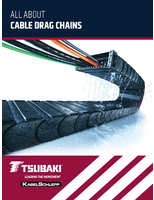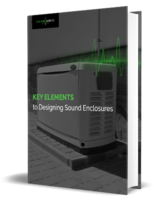Simulation Software helps develop magnetic materials.
Share:
Press Release Summary:

With support for massively parallel computing, EXAMAG LLG Simulator software simulates behavior of magnetic bodies, including speed and stability of magnetization process. Program can simulate spin-transfer torque effect, in which application of electric current can change magnetic orientation of electron. This enables simulations of data recording process of next-generation magnetic memory. With fast rendering of on-screen graphics, software shows calculated behaviors of magnetic bodies.
Original Press Release:
Fujitsu Releases New Version of EXAMAG LLG Simulator, Magnetic-Field Simulation Software
Simulates spin-transfer torque effect, with potential applications in next-generation devices
TOKYO, -- Fujitsu today announced the release of a new, enhanced version of FUJITSU Manufacturing Industry Solution EXAMAG LLG Simulator(1), a software package for simulating magnetic fields with support for massively parallel computing. The new version will be available from March 24.
The product simulates the behavior of magnetic bodies, including the speed and stability of the magnetization process in magnetic materials. When used as part of the development process for hard-drive heads or other memory devices, this software can help reduce the number of prototypes and improve performance. This new version adds the ability to simulate the spin-transfer torque effect, in which the application of an electric current can change the magnetic orientation of an electron. This feature enables simulations of the data recording process of next-generation magnetic memory, which is designed to offer the benefits of higher speeds with lower power consumption. The new version, which now runs on Windows as well as Linux, also includes faster rendering of on-screen graphics showing the calculated behaviors of magnetic bodies.
The product has potential applications in developing new magnetic materials, as well as new magnetic devices that use the spin-transfer torque effect.
Magnetic materials are used in a wide range of magnetic devices, including heads for hard drives, memory devices, DC/DC converters, and non-contact electrical chargers. When designing these devices, it is important to understand the behavior of magnetic bodies, such as the speed and stability of the magnetization process in magnetic materials. This software simulates the movements of electrons when the type, shape, and operating conditions of a magnetic body are changed, helping to optimize the design of a wide range of magnetic devices for improved functionality and performance.
This new version adds the ability to simulate the spin-transfer torque effect, which is being studied as a way to achieve faster and more power-efficient magnetic memory and magnetic heads for higher-capacity hard drives, in order to meet the ongoing need for devices with more functionality and higher performance.
Product Features
The EXAMAG LLG Simulator runs high-speed simulations using massively parallel computing, combining micromagnetics techniques(2) and the finite-element method(3), allowing PC servers to be used for the intensive computations involved in analyzing the designs of magnetic devices and the magnetization processes of magnetic materials with complex shapes.
Newly added features are as follows.
1. The spin-transfer torque effect: High expectations for new device development
When a magnetic body conducts electricity, torque is produced between electrons, specifically, by the interaction of electrons conducting electricity and electrons in a magnetic body, which causes a magnetic reversal. This is known as the spin-transfer torque effect. Compared to existing methods for reversing the magnetic orientation of electrons, this acts more quickly and with less power, making it attractive for applications in future devices. This software supports both "spin-charging" spin-transfer torque, in which spin is added to conducting electrons in a magnetic body, and "current-driven" spin-transfer torque, in which the current itself produces the spin-transfer torque. In addition to memory, such as MRAM, it also can be used with the new structure of domain wall motion memory. Another potential use is in analyzing magnetic heads for future hard drives using microwave-assisted magnetic recording (MAMR).
2. Improved usability
Fujitsu significantly redesigned the user interface to deliver a more comfortable analysis environment, and increased the speed at which simulation results are displayed on the graphics screen by at least ten times. In addition to Linux, the new version also runs on Windows PCs to support a wider range of work environments.
(1) LLG Simulator
The magnetization equation of motion derived from three physicists, Landau, Lifshitz, and Gilbert, is called the LLG equation. The simulator in the new software is based on this equation.
(2) Micromagnetics
A method of analyzing the fine structure of a magnetic material.
(3) Finite-element method
A method of numerical analysis. Widely used in structural analysis and magnetic-field analysis.
About Fujitsu Ltd
Fujitsu is the leading Japanese information and communication technology (ICT) company offering a full range of technology products, solutions and services. Approximately 162,000 Fujitsu people support customers in more than 100 countries. We use our experience and the power of ICT to shape the future of society with our customers. Fujitsu Limited (TSE: 6702) reported consolidated revenues of 4.8 trillion yen (US$46 billion) for the fiscal year ended March 31, 2014. For more information, please see www.fujitsu.com.
Contact:
Fujitsu Limited
Public and Investor Relations
Tel: +81-3-3215-5259
URL:www.fujitsu.com/global/news/contacts/




